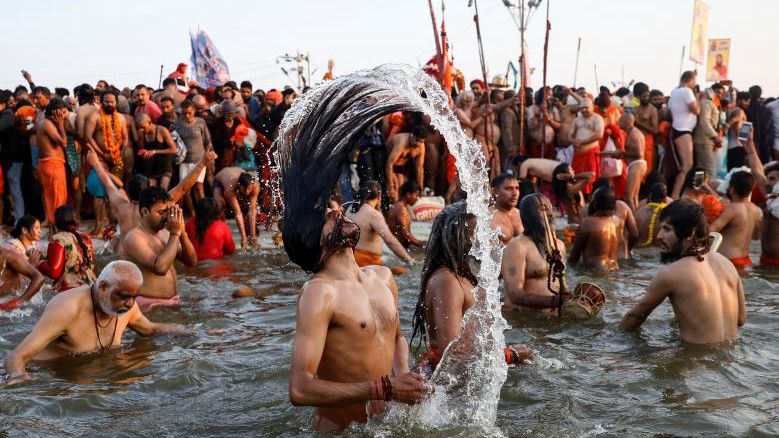The largest religious gathering anywhere on Earth gets underway Tuesday, with tens of millions of Hindu pilgrims congregating in India to bathe in sacred rivers for the Kumbh Mela.
Organizers are expecting the enormous spiritual festival in Allahabad to attract more than 100 million devotees over the next 48 days, with seas of pilgrims camped by the riverside.
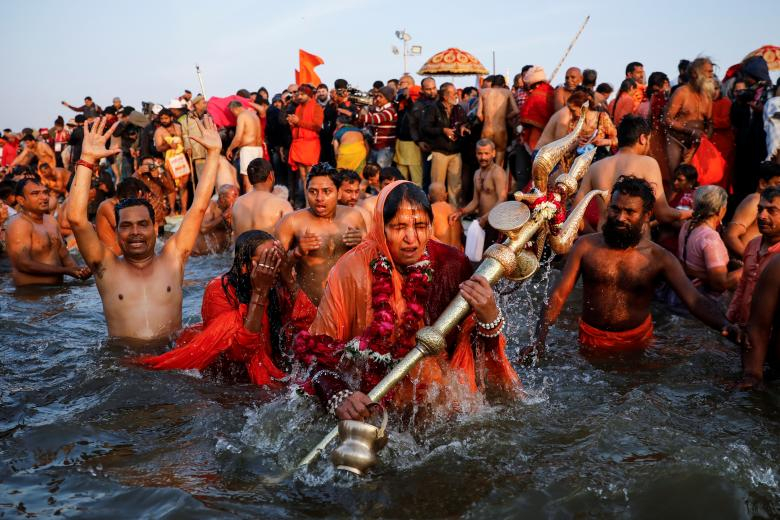
A Hindu holy woman holds a "trishul" or trident as she takes a dip during the first "Shahi Snan" (grand bath) at "Kumbh Mela," or the Pitcher Festival, in Prayagraj, previously known as Allahabad, India, January 15, 2019. /Reuters Photo
A Hindu holy woman holds a "trishul" or trident as she takes a dip during the first "Shahi Snan" (grand bath) at "Kumbh Mela," or the Pitcher Festival, in Prayagraj, previously known as Allahabad, India, January 15, 2019. /Reuters Photo
The ancient city in northern Uttar Pradesh state rises alongside the banks of the Ganges, Yamuna and mythical Saraswati rivers.
The confluence of the three -- known as Sangam -- is considered especially holy and Hindus believe bathing there during the Kumbh helps cleanse sins and brings salvation.
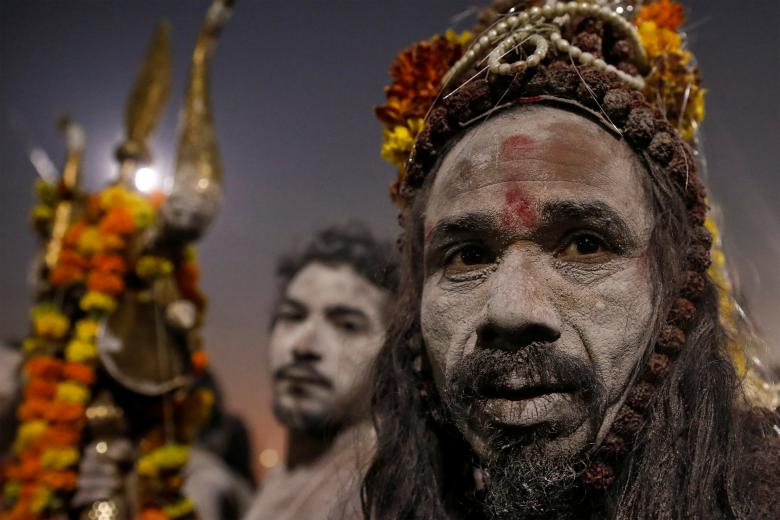
Naga Sadhus or Hindu Holy men leave after taking a dip during the first "Shahi Snan" (grand bath) at "Kumbh Mela" or the Pitcher Festival, in Prayagraj, previously known as Allahabad, India, January 15, 2019. /Reuters Photo
Naga Sadhus or Hindu Holy men leave after taking a dip during the first "Shahi Snan" (grand bath) at "Kumbh Mela" or the Pitcher Festival, in Prayagraj, previously known as Allahabad, India, January 15, 2019. /Reuters Photo
"This pilgrimage gives me peace of mind and an opportunity to reflect on my life," said Sangeeta Gangotri, a pilgrim who traveled 650 kilometers (403 miles) from Nagpur in western Maharashtra state to Allahabad.
The riverbank has transformed into a riot of noise and color.
Naked, dread-locked holy men smeared in ash and sadhus clad in saffron robes wander the crowds, offering blessings to pilgrims who have traveled from every corner of India for the ritual dip.
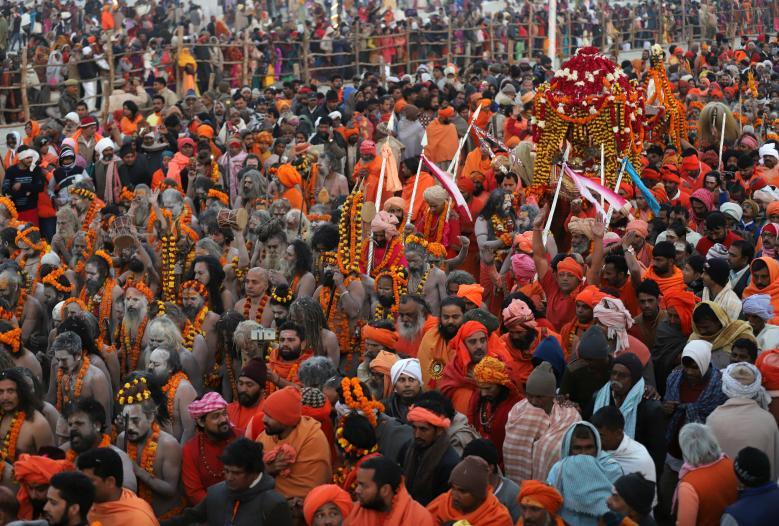
Sadhus or Hindu holy men leave after taking a dip during the first "Shahi Snan" (grand bath) at "Kumbh Mela" or the Pitcher Festival, in Prayagraj, previously known as Allahabad, India, January 15, 2019. /Reuters Photo
Sadhus or Hindu holy men leave after taking a dip during the first "Shahi Snan" (grand bath) at "Kumbh Mela" or the Pitcher Festival, in Prayagraj, previously known as Allahabad, India, January 15, 2019. /Reuters Photo
"All the Gods descend on this sacred place during this period. This is the most auspicious event for any human being," said Chandhans Pandey, a 60-year-old devotee.
"I have been planning to attend (for) many years."
The last major gathering in Allahabad in 2013 drew 120 million devotees, organizers said -- with 30 million plunging into the holy waters on a single auspicious day.
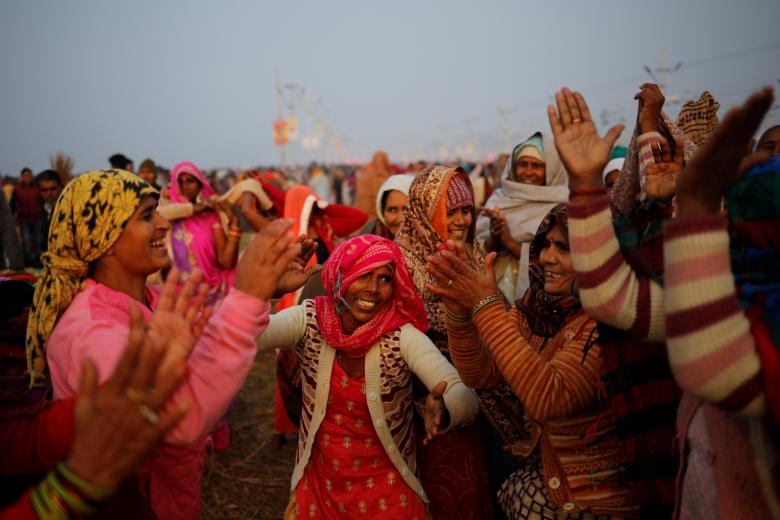
Devotees sing and dance after taking a holy dip at Sangam, the confluence of the Ganges, Yamuna and Saraswati rivers, during "Kumbh Mela," or the Pitcher Festival, in Prayagraj, previously known as Allahabad, India, January 14, 2019. /Reuters Photo
Devotees sing and dance after taking a holy dip at Sangam, the confluence of the Ganges, Yamuna and Saraswati rivers, during "Kumbh Mela," or the Pitcher Festival, in Prayagraj, previously known as Allahabad, India, January 14, 2019. /Reuters Photo
Nearly 30,000 police have been deployed to oversee crowds for the huge undertaking, and prevent stampedes that have marred previous gatherings.
A tent city with restaurants, roads and marketplaces has sprung up along the river, with pilgrims camped out across a sprawling 45-square-kilometer zone specially earmarked for the Kumbh.
"More people are drawn to the Kumbh now," Ganeshanand Bharamachari, a 78-year-old pilgrim from nearby Varanasi and a Kumbh veteran, told AFP.
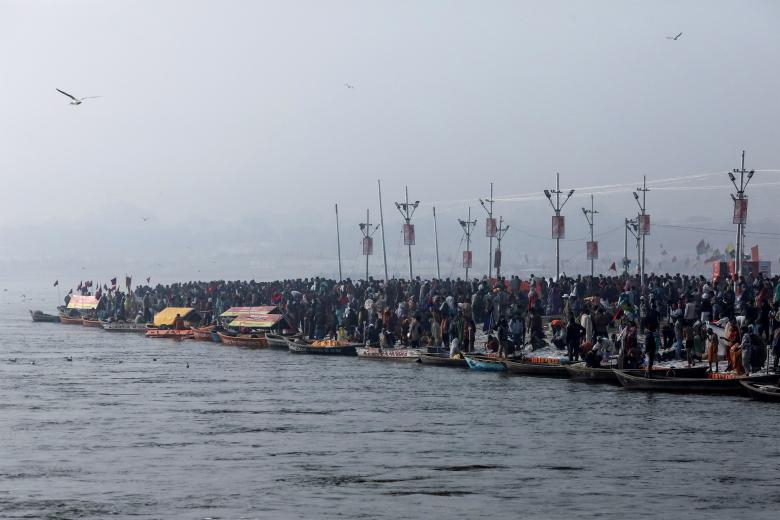
Devotees take a holy dip during "Kumbh Mela," or the Pitcher Festival, in Prayagraj, previously known as Allahabad, India, January 14, 2019. /Reuters Photo
Devotees take a holy dip during "Kumbh Mela," or the Pitcher Festival, in Prayagraj, previously known as Allahabad, India, January 14, 2019. /Reuters Photo
"People, mostly from cities, are becoming increasingly religious because the Western life they were living has not led them anywhere."
The Mela, which runs until March 4, was recognized as an intangible cultural heritage by UNESCO in 2017.
(Top image: Naga Sadhus or Hindu holy men take a dip during the first "Shahi Snan" (grand bath) at "Kumbh Mela" or the Pitcher Festival, in Prayagraj, previously known as Allahabad, India, January 15, 2019. /Reuters Photo)
Source(s): AFP

